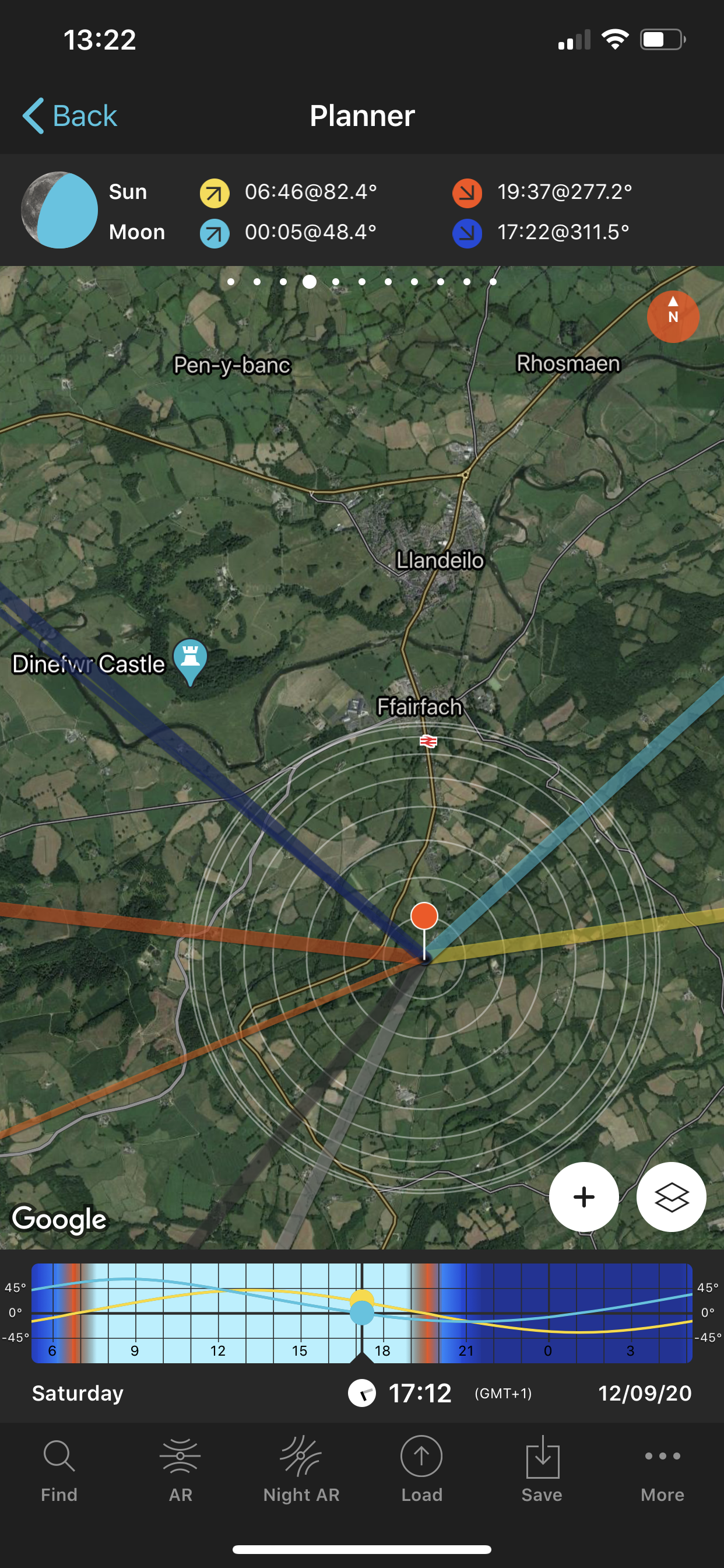If you’re dreaming of taking amazing landscape photos one of the first things you need to do is learn how to plan and prepare. In this post I’m going to run through some of the steps I take while planning a landscape photo, from finding and deciding on locations to reading the weather and working out the best time to set up and take the photo.
Morning mist around Dryslwyn Castle.
Nikon Z7 + 70-200 2.8E FL ED & ftz adaptor
Finding a Location
Sometimes one of the most challenging elements of landscape photography is deciding where to go. You can find and scout locations that catch your eye before going to take the photo and there are many popular locations you can find on social media sites like Instagram by asking other photographers etc but I like to use a website called Photohound. This website has many photo locations added by other photographers and includes information about the location, what to shoot, tips on how to take photos there as well as nearby webcams and information about sunrise/sunset etc. They also promote responsible geotagging by advising users of the site if it’s a location where they need to be careful to protect the local flora and fauna and follow local rules.
In the above screenshot you can see how many locations have been entered in to Photohound in South Wales alone. They have locations all over the world but if you’re somewhere there aren’t any locations entered, you are able to add your own.
The Weather, Sunrise/Sunset times & more.
So you’ve decided on where you want to go, but if you really want to make the most of the location you need to be going when the weather compliments the scene. This does’t mean you should only ever go out at sunrise or sunset, some subjects such as waterfalls or minimalistic long exposures will suit overcast days with diffused light for example. It’s up to you to decide what conditions will compliment your scene best (although Photohound does offer suggestions on the best conditions for each location).
There are two main apps I use to help me predict the weather;
1) UK WeatherMaps
As you can see this app shows you the cloud placement over the next 24 hours, it’s not exact but I do find it to be pretty reliable. I find this very useful as sometimes weather apps will correctly give your location as cloudy, but with this app you can see if there’s a clear sky to the east or west (depending on if you’re shooting sunrise or sunset) which means there’s a better chance of the cloud above you being lit up on the underside by the golden light.
2) Clear Outside
Clear outside is a weather app designed for photographers, it gives you a lot of information that at first may seem daunting but once you know where to look it is very useful.
For example in the images above I can see; time of day, sunset + sunrise, % of cloud coverage at both low, medium and high altitudes, when the ISS passes overhead, visibility, fog, rain (chance + amount), wind speed and direction, frost, feels like temps, dew point and humidity.
Using the information in the screenshots I can see that on this day there’s high humidity in the night and a lot of low and high cloud, this tells me that there’s likely to be some cloud inversion (mist) on the valley floor due to the high humidity but unlikely that there will be any golden light from the sunrise. These are similar conditions to the photo of Dryslwyn I’ve shown at the beginning of this post.
Another App I use to help me plan my photos is Photpills.
This app has so many features I could never cover them all here, but you can see the sunrise/sunset, moon rise/set, moon phase and the positions of the Milky Way across the sky. It even has augmented reality modes so that you can see exactly how everything lines up at a location at any time and date in the future.
Using all of the sites and apps above I can plan and prepare for a wide range of photos but my main piece of advice would be to not plan too much. It’s easy to get overwhelmed by having so many locations and differing conditions in your mind.
Planing your photos can greatly improve your photography but don’t get analysis paralysis. Settle on a plan and see it through, you’ll always get better photos and improve more by getting out and taking photos than you will staring at your phone and over-planning.
I hope this post has helped you! If you have any questions you can always send me a message on my Instagram or contact me via email.









